
This is a nylon model of a twisted
torus made by assembling identical units. It is a "speculative
reconstruction" of the historical artifact below, a twisted
torus in the Schloss
Ambras Museum, assembled in the 16th century from
seventy-six identical wood components.
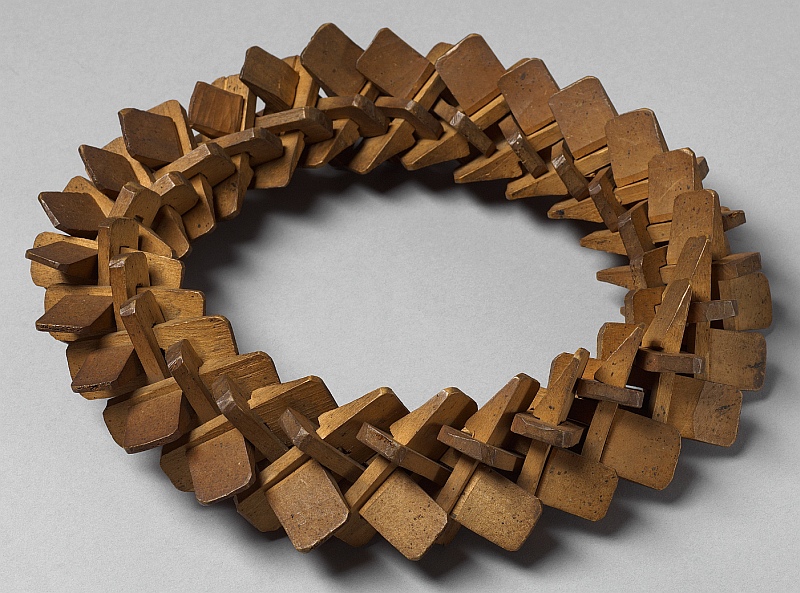
The wood artifact above fits in the
same tradition of celebrating geometry as the following 1567
woodcut by the German graphic artist Johannes
Lencker. This is the earliest printed image I know
of a twisted torus:
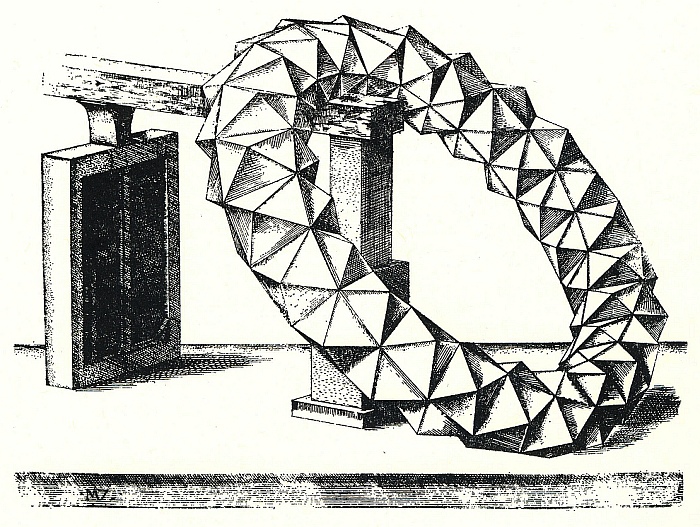
My rapid prototyping model of the twisted torus is based on units of the following shape:
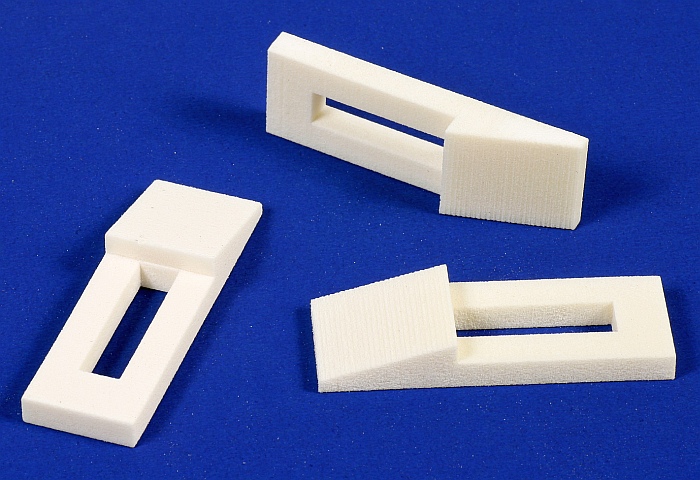
Three units assemble at 90 degrees
to make the module below. Note that the unfilled slot is
parallel to the base plane of the rightmost wedge. So one can
make an arbitrarily long straight chain of these modules.
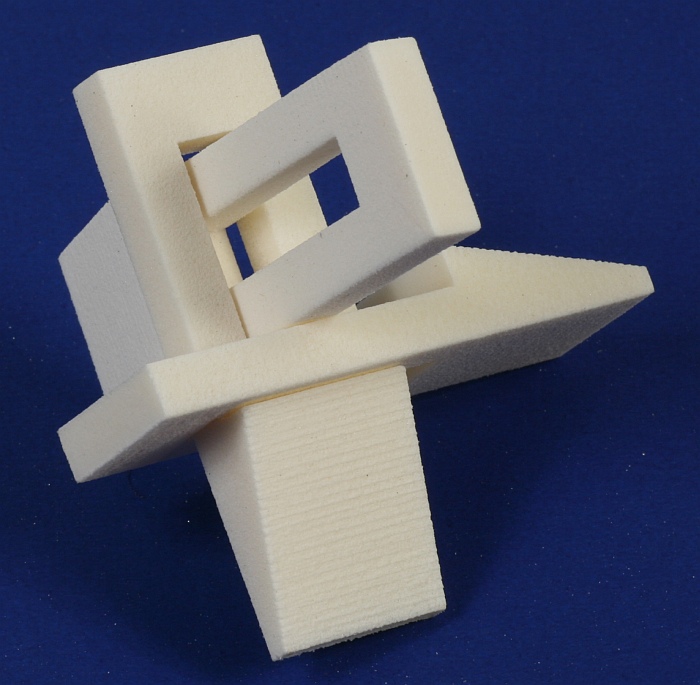
If the number of units is a
multiple of three, the modules can be curved around to close
into a cycle with no twist. Below is a no-twist cycle with
75 units (25 modules).

If the number of units is one more
than a multiple of three, it is natural to give it a slight
twist before closing. Below is an assemblage of 76 units.
This is the same number, twisted in the same manner, as the wood
artifact above:
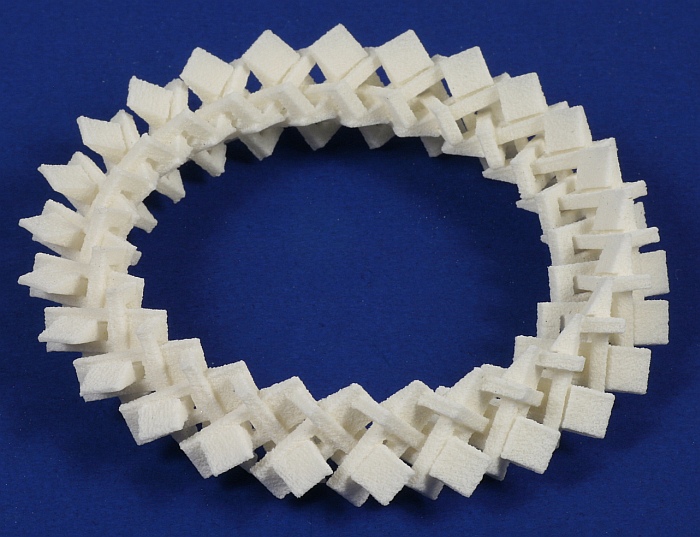
Below is an image of an analogous
construction with 77 units. It has the reverse twist from the
above.
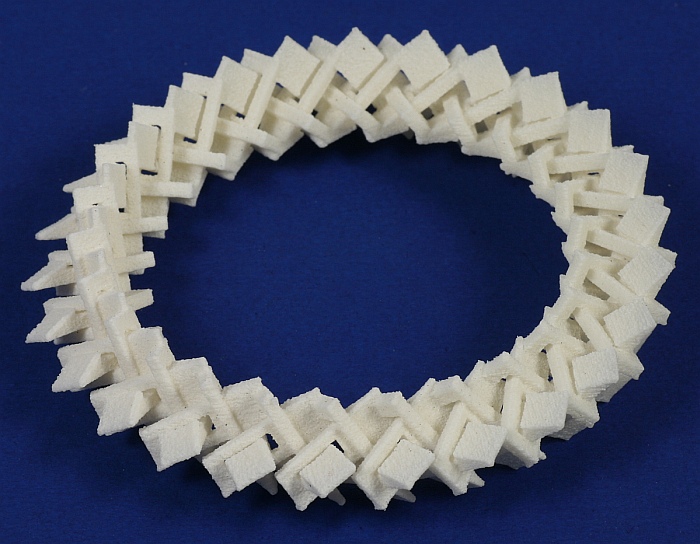
Bret
Rothstein, in the Art History department at Indiana
University, has studied this object to understand its possible
purpose. Bret told me about this object and I made the computer
models to get a sense of how much play was needed in the slot in
order to close the loop with a twist but not so much play that
it would feel sloppy and loose. He made a walnut reconstruction
of the units, shown below just before closing the cycle.

Below is the closed loop after Bret was finished. Can you figure out how to make the final connection?

My stl version is below. I
didn't make enough units to close the loop, so I can only make
an arc. Playing with these parts gives you a hands-on
opportunity to think about why this was made and how the loop
was closed. Was it a mechanical puzzle challenging the user to
disassemble it and reassemble it? Was it just a visual
puzzle, challenging the viewer to think about how it was
assembled? Was it a "masterpiece" displayed to prove the
skill of the creator? Was it functional, perhaps a trivet
or laurel to be worn on the head like a mazzocchio?
Were the parts leftover material in some workshop, perhaps a
wooden furniture or carriage maker, which someone casually put
together into a chain? I have no knowledge about any of
this. Let Bret and me know if you find out anything
illuminating about these questions.
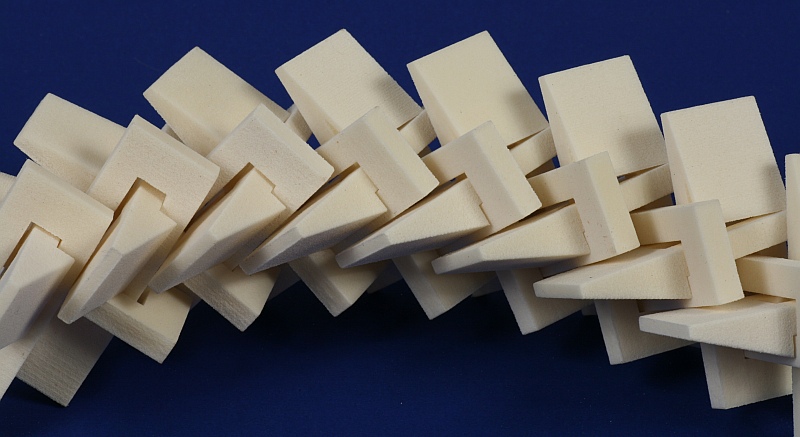
If you have access to a 3D printer
and want to make your own version of these models, here are the
stl files. The first two are for making individual parts
that you can link together. The last three files are
closed cycles; each is a rigid model in which the parts
intersect their neighbors slightly.
Addendum
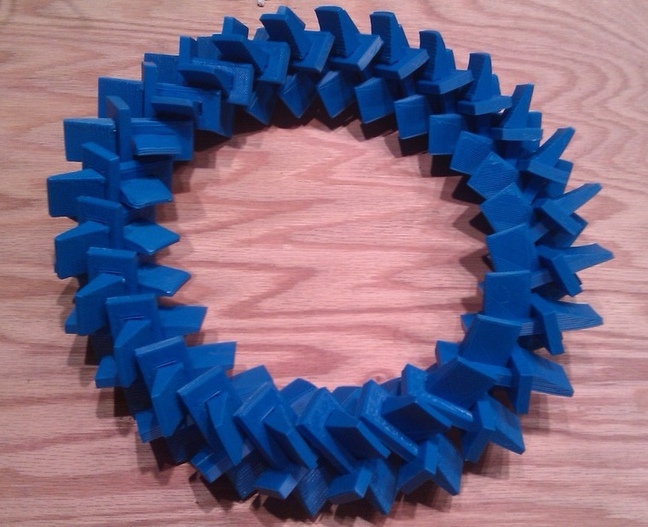
Adam Mayer uploaded my stl file
to Thingiverse
and Charles Pax made this complete ring.

The MakerBot folks kindly gave it to me at the NY Maker Faire.
Coincidentally, this was just four days before I happened to be going to Hawaii!
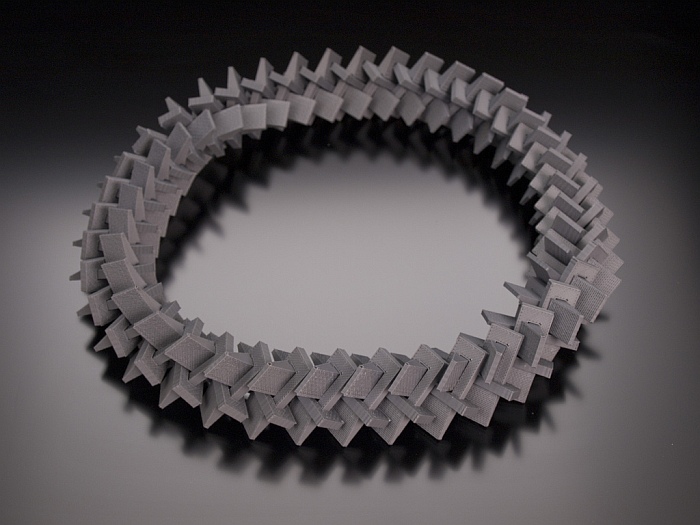
Then Phil Renato made one also.

The MakerBot folks kindly gave it to me at the NY Maker Faire.
Coincidentally, this was just four days before I happened to be going to Hawaii!

Then Phil Renato made one also.
Beer Yeast Storage Device??
Surprisingly, it seems that this design may be what is known in Danish as a "Gærkrans", which was apparently used to collect and store yeast between beer brews. Thank you to Bodil G., commenting on a Boing-Boing post of my MakeZine blog, for suggesting this. Here are some examples. (But most wood floats, so how does it collect yeast that sinks?)Scholarly Analysis
Bret
Rothstein wrote an article about the historical
object, arguing it was intended to be visually and
intellectual difficult (long before any possible use in
beer-making): Bret Rothstein, "Making Trouble: Strange
Wooden Objects and the Early Modern Pursuit of Difficulty,"
Journal
for Early Modern Cultural Studies, Volume
13, Number 1, Winter 2013, pp. 96-129.
Hungarian Examples
Search for images of "kutyagerinc"
which seems to be a Hungarian word.